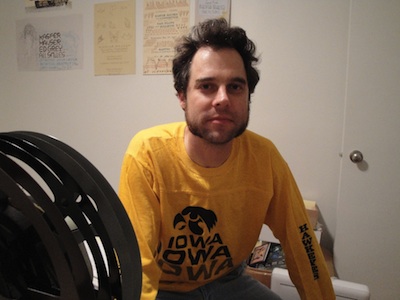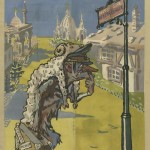As part of his performance art practice SAIC faculty member Thomas Comerford used to run up and down a flight of stairs until exhaustion, then one day he picked up a Super 8mm camera and his focus shifted.
“I quickly became disinterested in performance and interested in the image that moved,” says Comerford when asked about the origin of his interest in film. “I was taken with the photochemical image and how the medium turned this thing into this other thing.”
Turned on by Christopher Maclaine’s “The End,” Comerford embraced the American avant-garde. “I’m an obsessive person. Whatever it is I’m into, that’s what I’m going to do something with. That has basically propelled what kind of movies I make.”
So what was the obsession behind “Indian Boundary Line?” All diagonal roads in Chicago originate out of downtown, except for Rogers Avenue. Comerford thought, “Wow, this road is weird,” and embarked on a four-year journey into the investigation of the street that led to nowhere.
Comerford spent his time at the Newberry Library researching for text that uncovered this local history, including excerpts from the Treaty of St. Louis and passages of “Little House on a Prairie,” to explore the “notion of what land is, how it’s used, and how it’s philosophically conceived.”
Sticking to his preferred mediums of 8mm and 16mm film, Comerford spends his time exploring spaces on the boundary line. The home movie feel and old school maps evoke reminiscence of the past. Although Comerford does not have ties to the Native American community, he considers himself an ally. This has a profound impact on the film, which expresses a sense of loss and sadness.
“Indian Boundary Line” encourages contemplation of this micro-study of the construction of the United States. The film pulls the audience into a state of reflection that at times competes with the spoken text, which is valuable material on its own.
Here is an excerpt of the film, courtesy of Thomas Comerford, along with additional information about the screening.
“Indian Boundary Line”
Chicago Cultural Center
Thursday, September 8 12 – 1 p.m.
78 E. Washington
Claudia Cassidy Auditorium
For additional information visit http://fotp.org/.






















